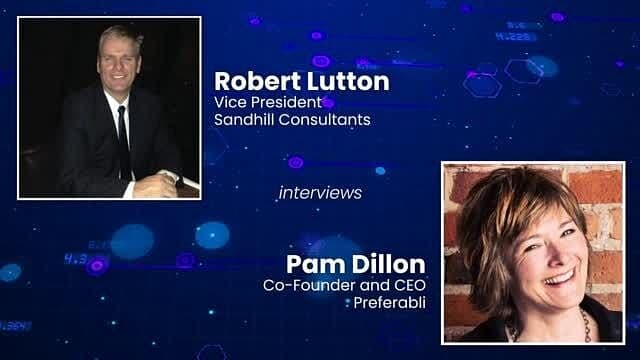Digital Transformation
Preferabli, Co-Founder and CEO: Our ML Works the Way Human Experts Work
Written by: CDO Magazine Bureau
Updated 12:48 PM UTC, Thu September 21, 2023


(US and Canada) Pam Dillon, Co-Founder, and CEO, Preferabli, speaks with Robert Lutton, Vice President, Sandhill Consultants, about how Preferabli’s algorithms learn from consumer preferences, turn them into insights and curation, and eventually impact business outcomes.
Preferabli starts with a single consumer opinion and then builds preferences from there. The platform can take in any kind of digital signal and use it as a proxy for preferences, such as taste or buying preference. The platform takes a given consumer rating and uses it as an indication of a conversation between a merchant and a consumer. The consumer’s preference for a particular wine or whiskey is captured based on the presence and the absence of over 600 different characteristics captured in the context of that consumer reaction. Similarly, there is a second rating and a third, and the algorithms recalculate preferences.
“It works the way a human expert would work. Sometimes you get surprising feedback like when you’re tableside or working in a retail store because they’re human and they vary in their responses. But that core process is how the machine learns. Any time someone can explain to you exactly where their code learns, they’re probably not doing machine learning. They’re probably doing a form of automation, and be aware because they’re making a lot of assumptions that you may not want them to make. And it may be very difficult to unpack those assumptions. Ours is pretty transparent. We work the way human experts work. That’s why it works so well,” Dillon says.
Human expertise was a good place to begin, putting together the right and left sides of the brain using data together with the approach of a human expert, she adds. The team started to build this platform, evaluating the presence and the absence of hundreds of different characteristics of preferences.
“We could not think of a better, more comprehensive way to not only unlock the millions and millions of beautiful artisanal products in the world for the consumers but at the same time, that learning process actually allows us to evolve with the consumer,” Dillon says. “It is a well-recognized dynamic in the wine and spirits industry that when somebody starts their journey, they tend to like certain things, and then, their palette evolves and grows. And it’s really fascinating to see how our software can then hone in and ultimately connect the supply side of the world with the demand side of the world.”
On the business side, hundreds of billions of dollars’ worth of revenue depends on getting it right.
Regarding business impact, Dillon says that Preferabli spent years coming up with various modules for specific business needs. The various combinations of modules led to an increase in sales and cost reduction.
It reduces the expenses of wine and spirit experts. And on the balance sheet side, it allows merchants to optimize their inventory. “We have the ability to capture the nature of the preferences of all their consumer users together in the context of their inventory, and let them know opportunities that they’re missing, where they’re oversupplied or overstocked, and especially in the context of trend analysis with the evolution of consumer preference generally and their consumers in particular,” Dillon concludes.


